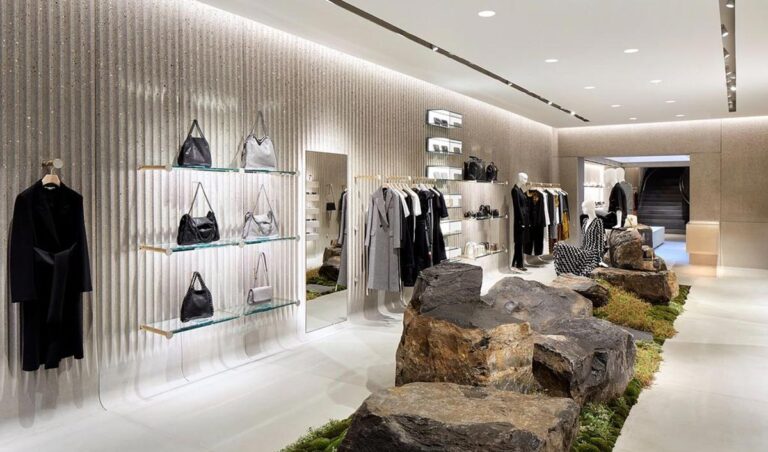4 Key Strategies to build a successful D2C Luxury Brand
It has become increasingly important now-a-days for luxury brands to interact, inspire and involve consumers at every touch point of their shopping journey. In last few years, many luxury brands including Louis Vuitton, Burberry and Prada, to name a few, are shifting their distribution strategy to D2C channels as it provides higher margins and more control than traditional wholesale channels. As per a recent report by Bain and Company, online luxury sales grew from 12 % in 2019 to 23% in 2020 and is predicted to reach 30% by 2025. Today over 90% of luxury sales are digitally influenced.
For many luxury brands, adopting D2C strategy during the pandemic has paid off for various reasons- from increasing brand awareness to driving sales. During this time, high-end brands have realized the significance of developing direct relationship with consumers. It not only enabled the brands to offer better customer experience but it also provided access to customer data and direct customer feedback. However, the key question is: What set of strategies should be adopted to develop a successful D2C brand?
Here are 4 key strategies to build a successful D2C luxury brand:
Focus on effective Storytelling: Unlike buyers of regular brands, luxury brand consumers look for experience and authenticity rather than affordability and functionality. Luxury decision making is affective in nature rather than cognitive. Hence, brands should create dream and desire amongst the buyers, so that they are ready to make these indulgent purchases. D2C brands must focus on highlight brand’s DNA and core values. Storytelling should be an integral part of brand communication strategy. It helps to achieve genuine association between brand personality and consumer’s identity. By conveying what the brand stands for, brand’s history, how the products are created and sharing the tale of artisans who give life to the products, marketers can touch the heart of consumers and build an emotional bond with them. Brands must emphasize on product uniqueness, craftmanship and excellent quality in their social media campaigns and other marketing communications.
Note: Real, authentic and relatable stories may help the brands to establish strong connect with their target audience and drive luxury sales.
Invest in technologies: D2C brands should invest in AI-based consumer insight technologies (both online and offline) to win new-age discerning consumers. Imagine you are visiting a luxury masion where you are browsing beautifully exhibited dresses or shoes while sipping on a glass of champagne. Can this experience be replicated online? This has been the greatest challenge for luxury brands to establish themselves on ecommerce platform. Therefore, luxury brands have been one of the slowest to embrace digitization. However, no more these brands can ignore online platforms and consider it just as a communication tool rather than customer acquisition channel. Currently, AI and VR has made it easy for brands to replicate offline experience to online stores. Digital tools like 3D/ 360-degree product viewing and virtual dressing room can help brands to augment online purchase experience. Also, the humanistic element (through live chat; video conferencing; Whats app calling, etc.) should be intertwined with digital tools to give personalized attention and immersive experience during shopper’s entire digital journey. Strong visual appeal of the e-boutique will enable luxury brands to maintain their unique brand identity.
Note: Luxury companies should spend on making their own ecommerce website rather than only rely on third party market place so that they can acquire all necessary information about their buyers.
Provide memorable experiences: Heart of D2C brands lie in redefining transaction-based stores into emotion-based stores. Brands should make their stores Instagram-able, relatable and sharable to attract young consumers who live in digital world. Let’s take example of start-ups like Warby Parker, Rent the Runway (RTR), The RealReal and Nykaa. They all are digitally native D2C brands. They started as pure online retailers but today they have their brick-and-mortar stores to provide touch, feel and experience to their consumers. RTR has lately reached unicorn status and have opened large retail stores with cafe, stylists, beauty bar, dressing rooms and space for workshops and events to engage, educate and entertain the consumers. These brands are disrupting the rules and norms of the luxury industry.
Note: It is important for D2C brands to establish experiential stores in addition to their online presence.
Offer excellent customer service: In case of D2C brands, it is important to have robust return/refund policies to gain consumers’ trust. Also, services like BOPIS (buy online pick in-store)/ BORIS (buy online return in-store) should be provided to clients to provide them seamless omni channel experience and convenience. Sales associate should be well trained to serve the role of an expert/ consultant rather than being a mere cashier. They should focus on building long-term relationship with the consumers by providing them excellent service.
Note: D2C brands should aim to exceed the expectations of the consumers and give them ‘wow’ moments at every contact point. Brands should maintain consistency in their message across varied platforms including their website, mobile app, social media handles and brick and mortar stores to develop consumer trust. Now more than ever, digital platforms are allowing brands to increase their reach, tap new markets and acquire new consumers; leading to increase in sales and profitability. In this digital era, building direct to consumer relationships is critical for luxury brands to survive and thrive.
(This article has been previously published in Indianretailer.com)
